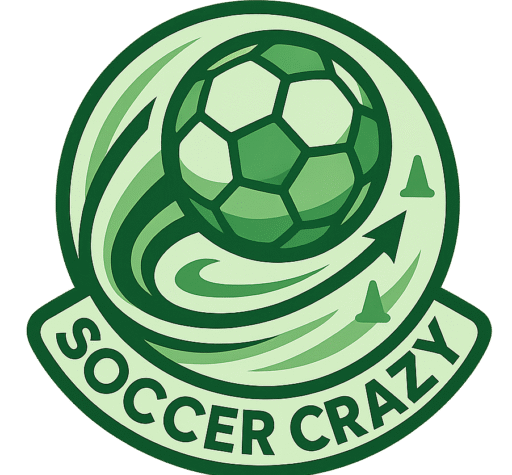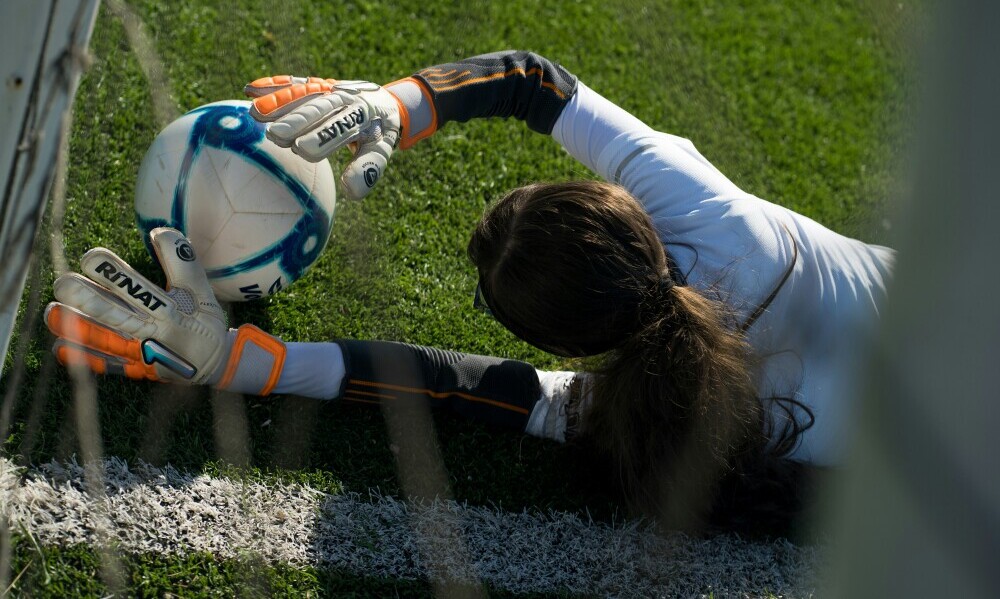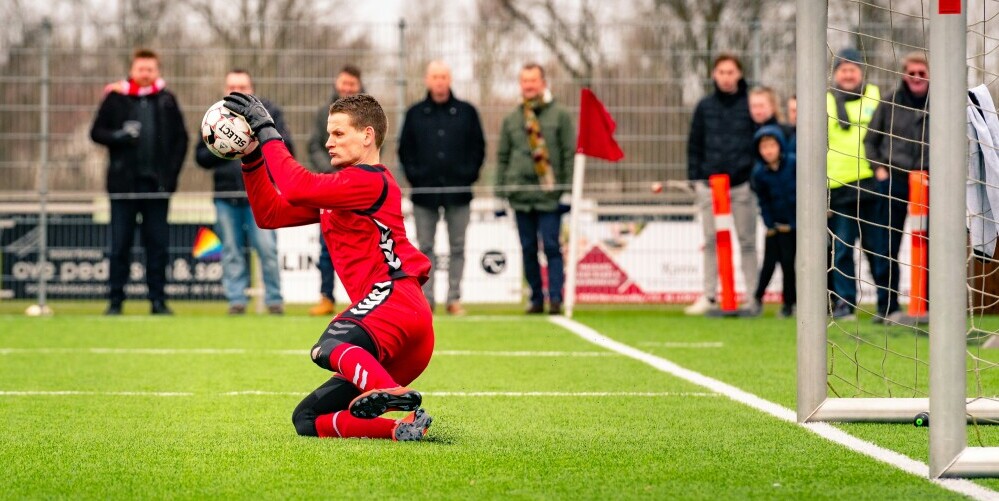In the rapidly evolving world of soccer technology, wearables have become a game-changer for player performance, injury prevention, and tactical analysis.
For goalkeepers, whose roles demand unique skills and physical attributes, choosing the right wearable technology is crucial.
This article delves into the best soccer wearables for goalkeepers, focusing on their benefits, features, and how they can enhance performance on the field.
1. Understanding the Needs of Goalkeepers
a. Unique Demands of the Goalkeeping Position
Goalkeepers have distinct physical and technical requirements compared to outfield players. They need to excel in areas such as:
- Reflexes and Reaction Time: Quick reflexes are essential for making saves and reacting to fast-paced scenarios.
- Agility and Movement: Goalkeepers often make lateral movements, dives, and jumps.
- Strength and Conditioning: They require strong legs, core, and upper body strength for effective saves and distribution.
b. The Role of Wearable Technology
Wearable technology can provide goalkeepers with valuable insights into their performance and physical condition. The right wearable can help monitor aspects like:
- Movement Patterns: Understanding how a goalkeeper moves during training and matches.
- Physical Load: Monitoring exertion levels to prevent overtraining and injuries.
- Technical Skills: Analyzing specific skills related to goalkeeping, such as reaction times and diving efficiency.
2. Key Features to Look for in Soccer Wearables for Goalkeepers
a. Performance Metrics
- Movement Tracking: Look for wearables that accurately track movements, including lateral and vertical jumps, diving, and quick directional changes.
- Impact Detection: Features that measure the force of impacts during saves or collisions can be valuable for assessing and preventing injuries.
b. Comfort and Fit
- Design and Fit: Ensure the wearable is comfortable and fits well, allowing goalkeepers to perform their duties without distraction. Wearables should be lightweight and ergonomically designed to avoid interfering with movement.
c. Data Accuracy and Analysis
- Precision: Choose wearables known for their accuracy in tracking performance metrics. Reliable data is crucial for effective analysis and improvement.
- Data Integration: Some wearables offer integration with apps or software that provide detailed analysis and visualizations of performance metrics.
3. Top Soccer Wearables for Goalkeepers
a. Catapult Vector
i. Overview The Catapult Vector is a popular choice among professional athletes, including goalkeepers. It is known for its advanced performance metrics and detailed analysis capabilities.
ii. Features
- Movement Tracking: Offers detailed insights into movements, including high-intensity efforts and changes in direction.
- Impact Measurement: Provides data on impact forces, helping assess the physical strain on goalkeepers during saves and collisions.
- Integration: Compatible with a range of analysis software for comprehensive performance reviews.
iii. Benefits
- Enhanced Performance Analysis: Provides in-depth data to fine-tune movements and techniques.
- Injury Prevention: Helps monitor and manage physical loads to reduce the risk of injuries.
b. GPSports Elite
i. Overview GPSports Elite is another top choice, offering robust tracking capabilities and a user-friendly interface.
ii. Features
- Comprehensive Tracking: Monitors various performance metrics, including distance covered, speed, and movement patterns.
- Wearable Design: Designed for comfort and durability, making it suitable for the physical demands of goalkeeping.
- Real-Time Feedback: Provides real-time data to coaches and players during training sessions.
iii. Benefits
- Performance Insights: Helps identify areas for improvement in movement and technique.
- Tactical Adjustment: Real-time data allows for immediate tactical adjustments and feedback.
c. STATSports Apex
i. Overview STATSports Apex is well-regarded for its precision and ease of use, making it a great option for goalkeepers looking to enhance their performance.
ii. Features
- Movement and Load Tracking: Tracks various metrics, including distance, speed, and physical load, with high accuracy.
- User-Friendly Interface: Features an intuitive app that provides easy access to performance data and analysis.
- Customizable Reports: Allows for the creation of customized reports tailored to specific needs.
iii. Benefits
- Detailed Analysis: Offers detailed performance insights that are easy to understand and apply.
- Enhanced Training: Provides actionable data to improve training efficiency and effectiveness.
4. Practical Tips for Using Soccer Wearables
a. Incorporating Wearables into Training
i. Reflex and Reaction Drills: Wearable technology can be used to enhance reflex and reaction training for goalkeepers. For instance, wearables with accelerometers and gyroscopes can track the speed and direction of a goalkeeper’s movements during reflex drills. Coaches can set up drills where goalkeepers react to rapid ball movements or unpredictable shots. The data collected can provide insights into reaction times and movement efficiency, helping goalkeepers to fine-tune their reflexes and agility.
Example Drill:
- Reaction Ball Drill: Use a reaction ball and wear a device that tracks movement and response times. The goalkeeper faces a coach who throws the ball at varying speeds and angles. The wearable tracks the goalkeeper’s reaction time and movement accuracy. The coach can analyze the data to adjust the drill and improve the goalkeeper’s reflexes.
ii. Decision-Making Scenarios: Wearables can help simulate and evaluate decision-making scenarios. For example, goalkeepers can wear devices that monitor heart rate and stress levels while participating in situational drills. This information can help understand how pressure affects their decision-making process.
Example Drill:
- Pressure Penalty Shootout: Set up a penalty shootout scenario where goalkeepers wear wearables that track their physiological responses. Incorporate various stimuli, like loud noise or sudden movements, to simulate game pressure. Analyze the data to assess how well goalkeepers make decisions under stress and refine their strategies accordingly.
iii. Movement and Positioning: Incorporate wearables to track and analyze movement patterns and positioning during practice. Devices equipped with GPS and motion sensors can provide detailed feedback on positioning relative to the goal and movement efficiency during drills.
Example Drill:
- Crosses and Positioning Drill: During practice sessions with crosses from the wings, use wearables to track the goalkeeper’s positioning and movement in response to the crosses. Data can reveal whether the goalkeeper positions themselves optimally and moves efficiently to intercept or save the ball.
b. Overcoming Common Challenges
i. Device Comfort and Fit: One challenge with wearable technology is ensuring comfort and proper fit. Ill-fitting or uncomfortable wearables can distract goalkeepers and affect their performance. To overcome this challenge, select wearables designed specifically for athletes, with adjustable straps and ergonomic designs.
Solution:
- Pre-Training Fit Checks: Before incorporating wearables into training, conduct fit checks to ensure devices are comfortable and securely fitted. Allow goalkeepers to adjust the wearables as needed and provide feedback on comfort levels. Regularly review and adjust as necessary.
ii. Data Overload: Another challenge is managing the large volume of data collected by wearables. Too much data can be overwhelming and may lead to analysis paralysis. To address this, focus on key performance metrics and use data analysis tools to simplify and interpret the information.
Solution:
- Targeted Metrics: Identify specific performance metrics that are most relevant to your training goals. For example, prioritize metrics related to reflex times and movement efficiency. Use software or apps that highlight key insights and trends to make data analysis more manageable and actionable.
iii. Integration into Training: Integrating wearables into existing training routines can be challenging, especially if players are not accustomed to using technology. Gradual integration and clear communication about the benefits of wearables can help ease the transition.
Solution:
- Gradual Introduction: Start by introducing wearables in a limited capacity, such as during specific drills or sessions. Explain the benefits of using the technology and demonstrate how it can enhance their training. Gather feedback from goalkeepers and adjust the integration process to ensure a smooth transition.
5. Conclusion
Selecting the right soccer wearable for goalkeepers can significantly enhance their training and performance.
By choosing a wearable that offers accurate tracking of movement, impact, and physical load, goalkeepers can gain valuable insights into their game and make informed decisions to improve their skills and prevent injuries.
The Catapult Vector, GPSports Elite, and STATSports Apex are among the top options available, each offering unique features and benefits tailored to the needs of goalkeepers.
Incorporating these wearables into regular training routines can help goalkeepers optimize their performance, enhance their technical skills, and achieve their full potential on the field.
As technology continues to advance, the integration of wearables in soccer training will likely become even more sophisticated, offering even greater opportunities for improvement and success.
Happy training!!!!!!!!!



The article on wearable tech for soccer goalkeepers is spot-on! I’ve used similar devices in my own training and found them incredibly useful for honing reflexes and decision-making skills.
For instance, the real-time feedback and performance analytics have helped me identify areas for improvement and track my progress more effectively.
I’m curious—what specific features of the wearables mentioned do you find most beneficial for goalkeepers? Also, have you had any experiences where the tech didn’t quite meet expectations?
Looking forward to hearing how others have utilized these tools in their training!
Thank you Marlinda for your thoughtful comment!
I’m thrilled to hear that you found the article on wearable tech for goalkeepers to be spot-on and that you’ve had positive experiences using similar devices in your own training.
It’s always great to connect with someone who’s also leveraging technology to enhance their game!
Beneficial Features for Goalkeepers:
For goalkeepers, there are several specific features of wearables that I find particularly beneficial:
Reaction Time Measurement: This is crucial for goalkeepers, as quick reflexes can make all the difference. Wearables that track and provide feedback on reaction times during drills help in honing these critical split-second responses.Decision-Making Analytics: Some wearables offer insights into decision-making patterns during training sessions. By analyzing how quickly and effectively a goalkeeper reacts to different situations, these devices help identify areas for improvement and refine overall decision-making skills.Positional Awareness: Wearables can track a goalkeeper’s positioning throughout a session, offering heatmaps and data on where they tend to be most active. This helps in adjusting positioning strategies to better cover the goal area.Jump Height and Dive Metrics: Analyzing jump height and the effectiveness of dives can be incredibly useful. These metrics allow goalkeepers to work on their vertical reach and improve their diving techniques, both of which are crucial for shot-stopping.
Challenges and Limitations:
While the benefits are clear, there have been instances where the technology didn’t quite meet expectations:
Data Accuracy: In some cases, especially in high-intensity situations, the accuracy of the data provided by wearables can be a bit off. For example, tracking quick lateral movements during a dive might not always be perfectly precise.Comfort and Fit: For goalkeepers, the fit of wearable devices is crucial. If the device isn’t comfortable or is too bulky, it can be distracting during training. Finding a wearable that is both effective and unobtrusive can be a challenge.Learning Curve: There’s sometimes a bit of a learning curve in terms of interpreting the data and figuring out how to best apply it to training. Having access to the data is great, but it’s the actionable insights that truly make a difference.
It’s exciting to hear that you’ve been using these tools to track your progress and improve your skills.
I’d love to hear more about your specific experiences—what have been the standout moments where the tech really helped elevate your game?
And have you found any particular wearable device that strikes the right balance between functionality and comfort?
Looking forward to continuing this discussion and hearing more from you and others about how technology is being integrated into goalkeeper training!